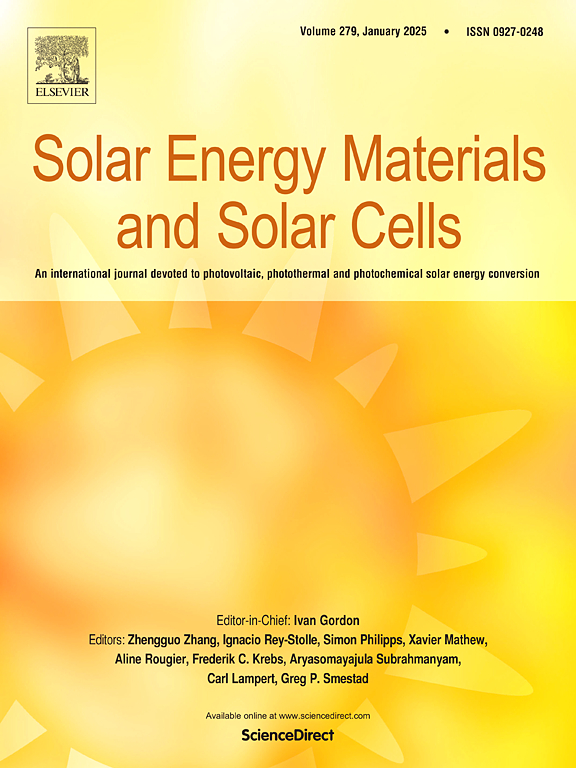Current distribution unevenness incurred uncertain contact resistivity of silicon heterojunction solar cells
IF 6.3
2区 材料科学
Q2 ENERGY & FUELS
引用次数: 0
Abstract
In crystalline silicon (c-Si) solar cells, achieving high efficiency requires high-quality passivation and carrier extraction at the metallization interface. The classical transfer length method (TLM) is commonly used to characterize the contact resistivity (ρc) of c-Si solar cells. However, when extracting the ρc of high-efficiency solar cells via the TLM method, the accuracy of the measurements is challenging due to the large variety of multiple tests, especially for silicon heterojunction (SHJ) solar cells. Moreover, a crowding effect at the metal and silicon interface incurs the possibility of an unreliable ρc value in TLM measurement due to inhomogeneous current transport within the device, which impacts the uncertainty of the ρc extraction. We unveiled the impact factors on measuring the ρc between the silver (Ag) electrode and indium tin oxide (ITO) through experimental and simulation approaches in SHJ solar cells. The factors, including the probe numbers, contact positions, and the ITO sheet resistance, have been systematically investigated. Additionally, the related current density distributions under bias at different cross-sections within the ITO layer were explored through COMSOL simulations, providing a more intuitive explanation for the varieties of the measured contact resistance. This work offers insights into more precise ρc measurements and favors high-performance metallization of SHJ solar cells.

电流分布不均匀导致硅异质结太阳能电池接触电阻率不确定
在晶体硅(c-Si)太阳能电池中,实现高效率需要在金属化界面处进行高质量的钝化和载流子萃取。经典的传递长度法(TLM)常用来表征c-Si太阳能电池的接触电阻率(ρc)。然而,在利用TLM方法提取高效太阳能电池的ρc时,由于多种多样的多次测试,测量的准确性受到挑战,特别是对于硅异质结(SHJ)太阳能电池。此外,由于器件内电流传输不均匀,金属和硅界面处的拥挤效应可能导致TLM测量中的ρc值不可靠,从而影响ρc提取的不确定度。通过实验和模拟方法揭示了SHJ太阳能电池中银(Ag)电极与氧化铟锡(ITO)电极之间ρc测量的影响因素。系统地研究了探针数量、接触位置和ITO片电阻等因素。此外,通过COMSOL模拟,探索了ITO层内不同横截面上偏压下的相关电流密度分布,为测量到的接触电阻的变化提供了更直观的解释。这项工作为更精确的ρc测量提供了见解,并有利于SHJ太阳能电池的高性能金属化。
本文章由计算机程序翻译,如有差异,请以英文原文为准。
求助全文
约1分钟内获得全文
求助全文
来源期刊

Solar Energy Materials and Solar Cells
工程技术-材料科学:综合
CiteScore
12.60
自引率
11.60%
发文量
513
审稿时长
47 days
期刊介绍:
Solar Energy Materials & Solar Cells is intended as a vehicle for the dissemination of research results on materials science and technology related to photovoltaic, photothermal and photoelectrochemical solar energy conversion. Materials science is taken in the broadest possible sense and encompasses physics, chemistry, optics, materials fabrication and analysis for all types of materials.
 求助内容:
求助内容: 应助结果提醒方式:
应助结果提醒方式:


